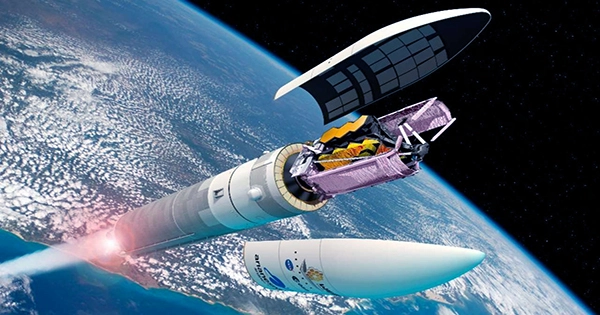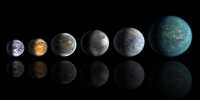A lonely, discarded rocket booster will slam onto the Moon’s surface at approximately 6,000 mph on March 4, 2022. After the dust settles, NASA’s Lunar Reconnaissance Orbiter will move into position to get a closer look at the smoking crater and, possibly, offer some insight on the strange physics of planetary collisions. I see this unforeseen impact as an intriguing opportunity as a planetary scientist who studies the Moon.
Over the previous 4 billion years, the moon has been a faithful witness to solar system history, with its extensively cratered surface recording many impacts. Scientists, on the other hand, seldom see the projectiles that create these craters, which are generally asteroids or comets. There’s only so much scientists can learn from examining craters if they don’t know what caused them. The forthcoming rocket impact will present a fortunate opportunity to learn more about how natural impacts hammer and degrade planetary surfaces.

A better knowledge of impact mechanics will aid academics in interpreting the moon’s desolate surface as well as the implications of impacts on Earth and other worlds. When a rocket lands on the Moon, it’s called a “moon crash.” The exact identify of the tumbling object presently on a crash trajectory with the Moon has been a source of discussion. The item is an upper stage booster from a high-altitude satellite launch, according to astronomers. It is around 40 feet (12 meters) in length and weighs over 10,000 pounds (4,500 kilograms). Evidence shows it was either a SpaceX or a Chinese rocket launched in 2014, but both companies have denied responsibility.
A shock wave will run up the length of the projectile at many miles per second as soon as the rocket strikes the lunar surface. The back end of the rocket hull will be annihilated in milliseconds, with metal fragments bursting in all directions. The rocket is predicted to fall into the huge desolate plain within the massive Hertzsprung crater, just over the horizon on the other side of the moon from Earth. A double shock wave will descend downhill through the regolith, the powdery top layer of the Moon’s surface.
If there is a ship in the region at the moment, the collision will heat up the dust and rocks, creating a white-hot flash that will be visible from space. A cloud of melted rock and metal will extend from the impact point as dust, and sand-sized particles are hurled aloft. The expelled debris will shower back down to the surface surrounding the now-smoldering crater over the course of several minutes. The ill-fated rocket will be virtually unrecognizable.
If you’re a space lover, you might recognize that description since NASA conducted a similar experiment in 2009 when it crashed the Lunar Crater Observation and Sensing Satellite, or LCROSS, into a perpetually shadowed crater near the lunar South Pole. I was a part of the LCROSS mission, and it was a spectacular success. By analysing the composition of the dust cloud lofted into the sunlight, scientists were able to uncover traces of a few hundred pounds of water ice that had been freed from the Moon’s surface by the impact.
This was key evidence in favor of the theory that comets have been transporting water and organic molecules to the Moon for billions of years when they collide with its surface. My colleagues and I have labored for a decade to calculate the depth of this buried ice-rich layer since the LCROSS rocket’s crater is perpetually shrouded by shadows.
















